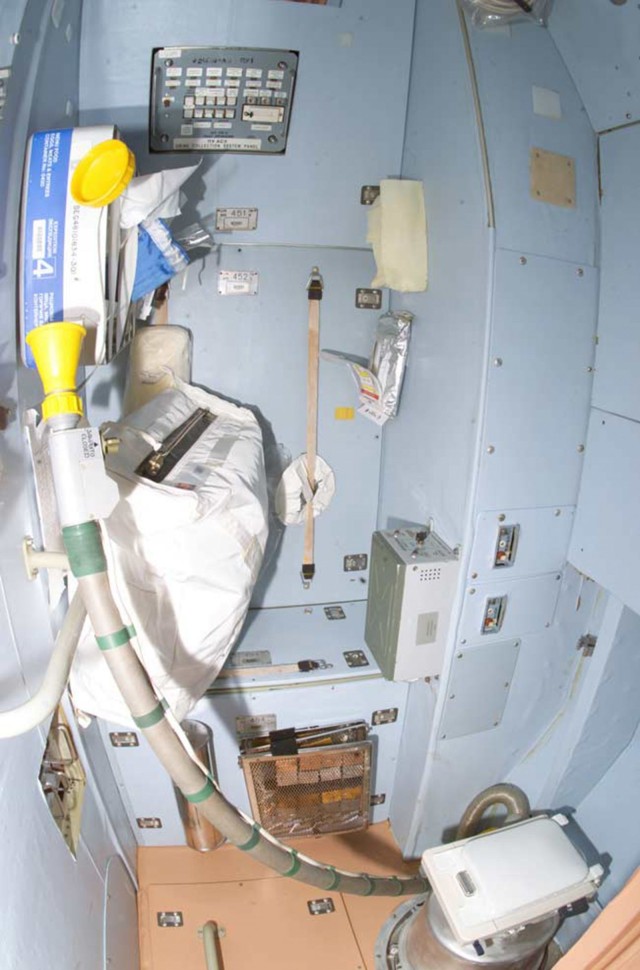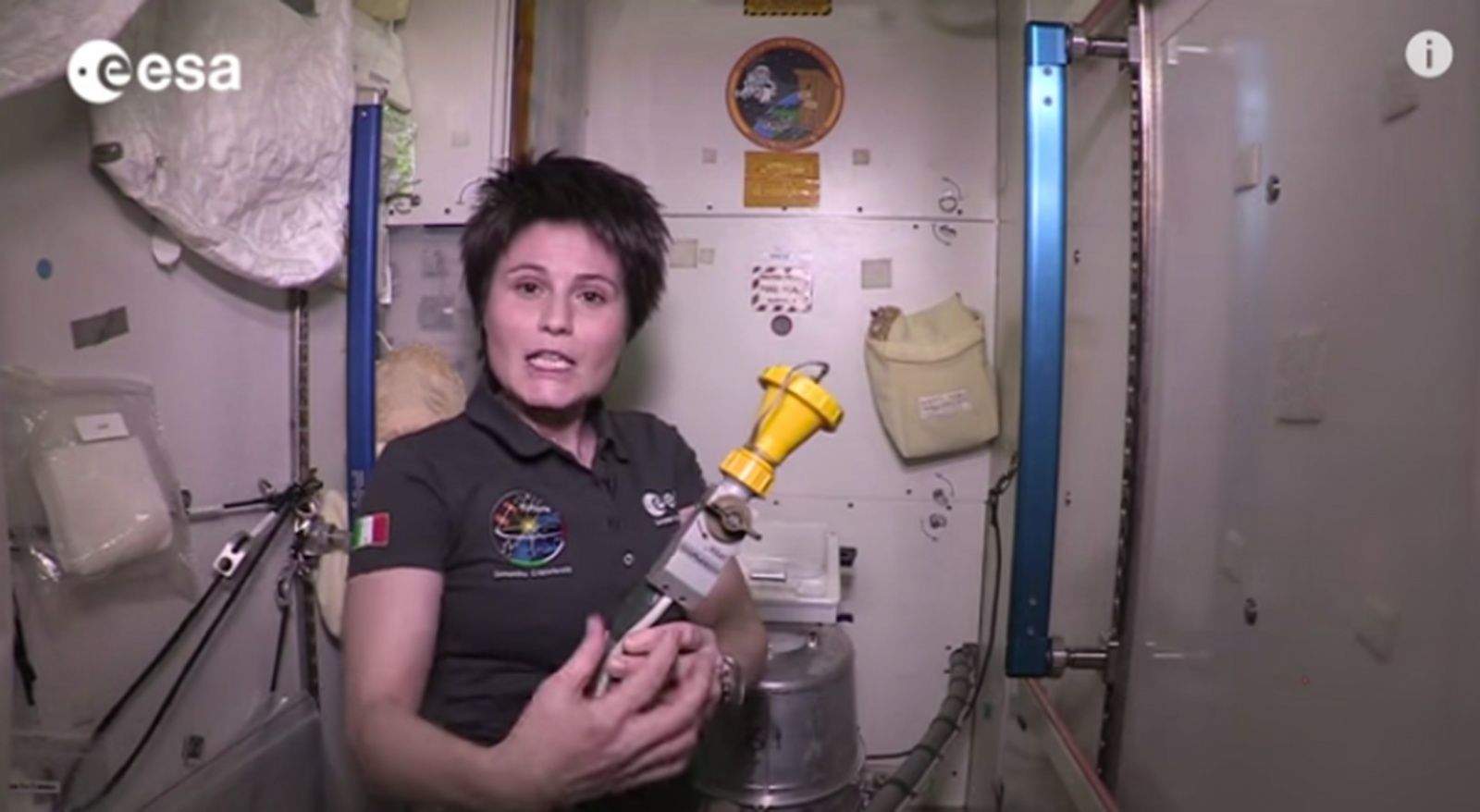We have a reinvigorated interest in the mysteries of space. Astronaut Scott Kelly is just beginning a record-breaking stint in zero gravity, a space probe is about to fly by Pluto and manned missions to an asteroid and Mars are in the pipeline.
There is also the ongoing science on how to go to the bathroom in space, where things tend to float.
Astronaut Samantha Cristoforetti explained that mystery over the weekend, when she took time from her work on the International Space Station to give a video tour of the bathroom (see below) and delicately describe going Numbers 1 and 2 in zero gravity.

As you might suspect, there are no flush toilets in the orbital outhouse. Astronauts, men and women alike, pee into a hose which uses vacuum suction to collect the urine and direct it to a processing unit that converts it into drinkable water. Each astronaut as their own funnel that goes at the end of the hose.
The suction function also comes into play when an astronaut must be seated. The tiny surface area of the seat does not invite extended reading, but apparently there is “positional training” for astronauts just so they know how to not only hit the hole but to secure and change the bag (it’s important to be courteous to your fellow flyers) that collects feces.
Cristoforetti does not explain the usual paperwork involved but it’s safe to assume toilet paper goes into the same bag. The bags of waste ARE NOT jettisoned into space to float around, but they go on capsules with other space station trash that are sent to burn up in the atmosphere. The bags are also brought back to Earth for disposal.
Bathroom breaks have a tradition of ruining the glamor associated with being an astronaut.
Alan Shepard beaome America’s first in space in 1961 and, thus, the first to pee in his suit. A series of delays on the launch pad caught up with Shepard and he radioed to mission control, “Man, I got to pee.” He was encouraged to hold for fear he would ruin the medical sensors in his silver space suit.
Finally, he was given the OK to go.
NASA developed a urine collection system but its failure put Gordon Cooper at risk in 1963 when his urine bag leaked and droplets got into the capsule’s electronics. It shut down the automatic re-entry program and Cooper was forced to manually pilot the Mercury ship back to Earth.
With longer missions such as Gemini and the Apollo moon landings, NASA had to plan for bowel movements and developed fecal collection bags taped to the astronaut’s bottom. Going No. 2 was fraught with complications and to minimize BMs, NASA put astronauts on a high-protein, low-residue diet.
Now that scientists are planning a trip to Mars, some are proposing putting the poop bags to use, lining the walls of a spacecraft with human waste to defend against cosmic radiation exposure.


